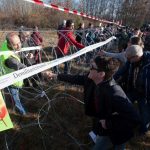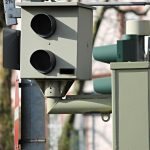Although Croatian police has intensified its activities on protecting eastern borders, some migrants still manage to illegally enter Croatia.
In Šarengrad, a small town near Ilok on the border between Croatia and Serbia, someone stole a car which was parked in front of a house. Later it turned out that the car had been stolen by illegal migrants who used the opportunity after the owner of the vehicle left the keys in the car. The migrants took the vehicle to the Vukovar suburb Sotin, where it was later found, reports Večernji List on October 4, 2016.
Domagoj Džigumović, the spokesman for the Vukovar-Srijem Police Department, confirmed that the police did find the car about 20 kilometres away from where it had been stolen. “We are still investigating all the circumstances”, said Džigumović.
This is just one more proof that migrants, despite stricter surveillance of Croatia’s eastern borders, still found ways to pass all the controls and illegally cross the border. In recent weeks, the police has repeatedly found migrants even farther away from the border. They are using forests at the border which help them to more easily cross the border undetected. In previous years, when their numbers were not so large, they mostly kept to the roads and railroad tracks in their illegal attempts to enter Croatia.
Nowadays, the state border is being monitored by a much larger number of police officers, who have at their disposal both stationary and mobile infrared and thermal imaging cameras. In recent weeks, police has been using helicopters as well to monitor the border line.
However, despite all the efforts, migrants spite manage to find their way across the border, so it is suspected there are organized smuggling groups. One of the aggravating factors is the fact that close to the Croatian border in Serbia there are three migrant reception centres which currently accommodate some 1,500 people. These people are able to move freely in Serbia without any supervision, which makes it easier for them to try to cross the nearby Croatian border.
Although there are worries that the last year’s migrant wave could be repeated, Interior Minister Vlaho Orepić has repeatedly said in recent days that he does not expect that situation will deteriorate. Since both Hungary and Slovenia have put fences on their borders with Croatia, there are worries that, if migrants start coming into Croatia in larger numbers, they are not going to be able to leave, which would turn Croatia into a hotspot.









